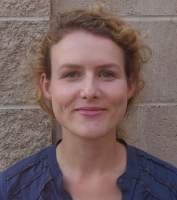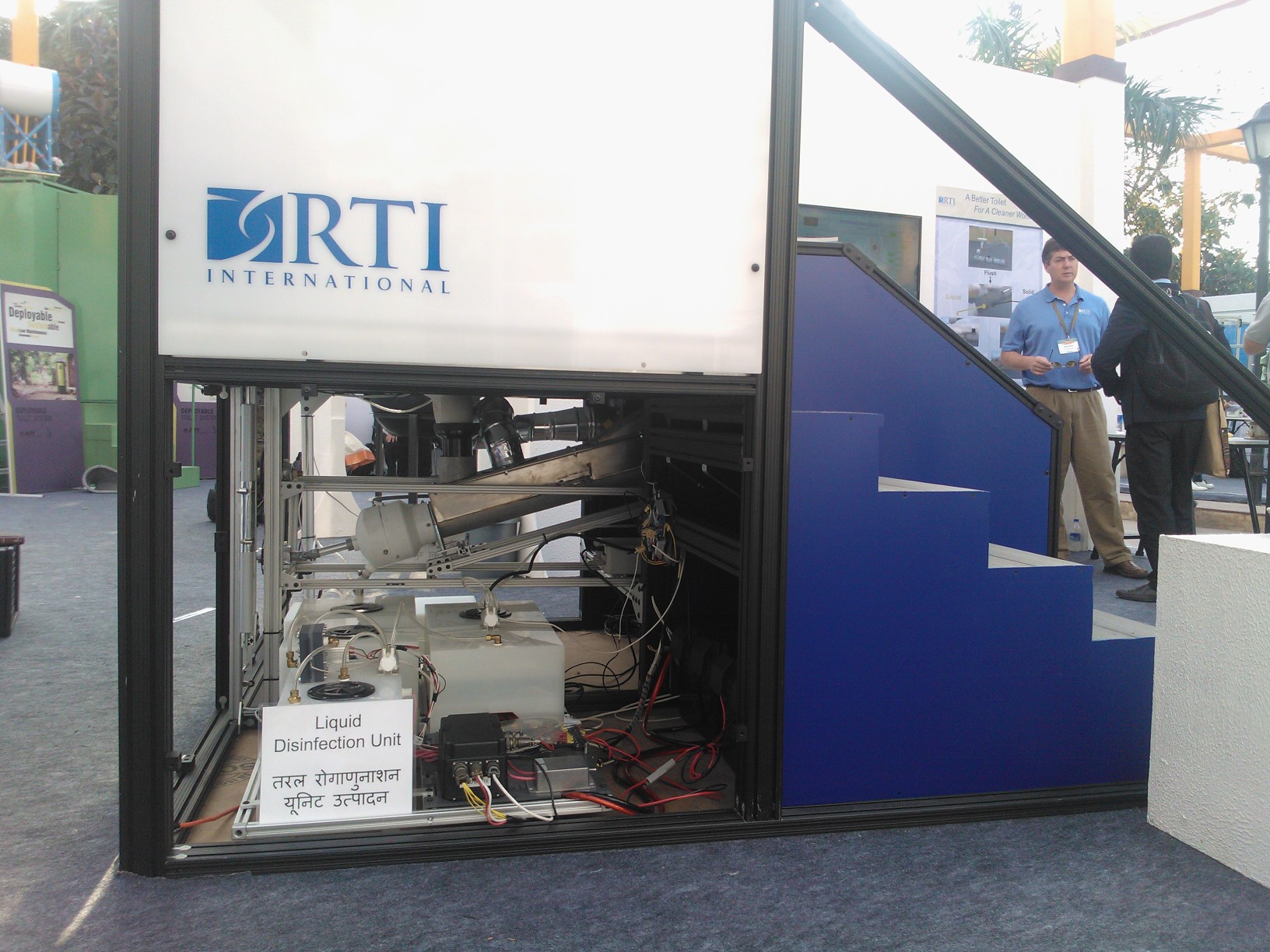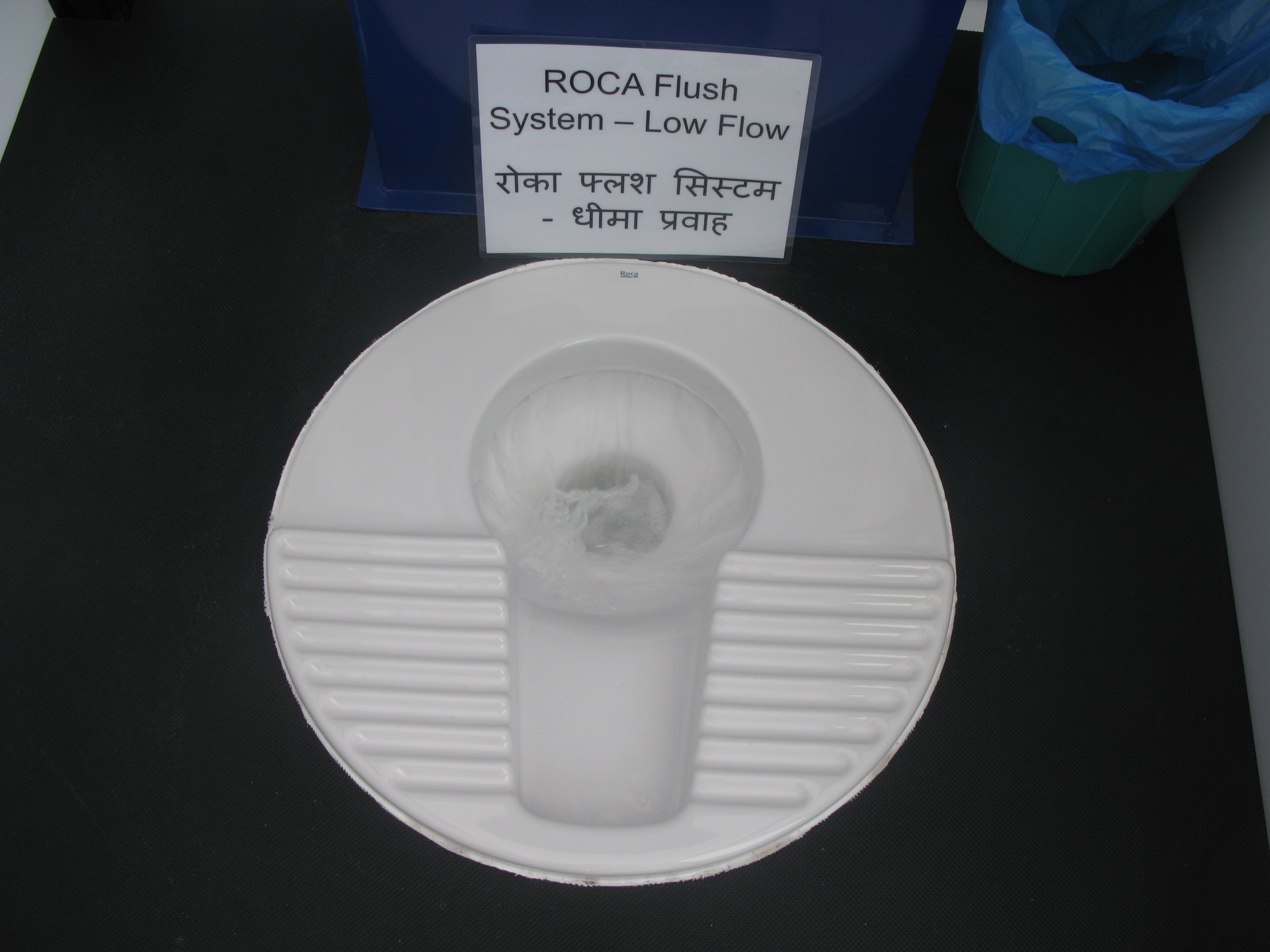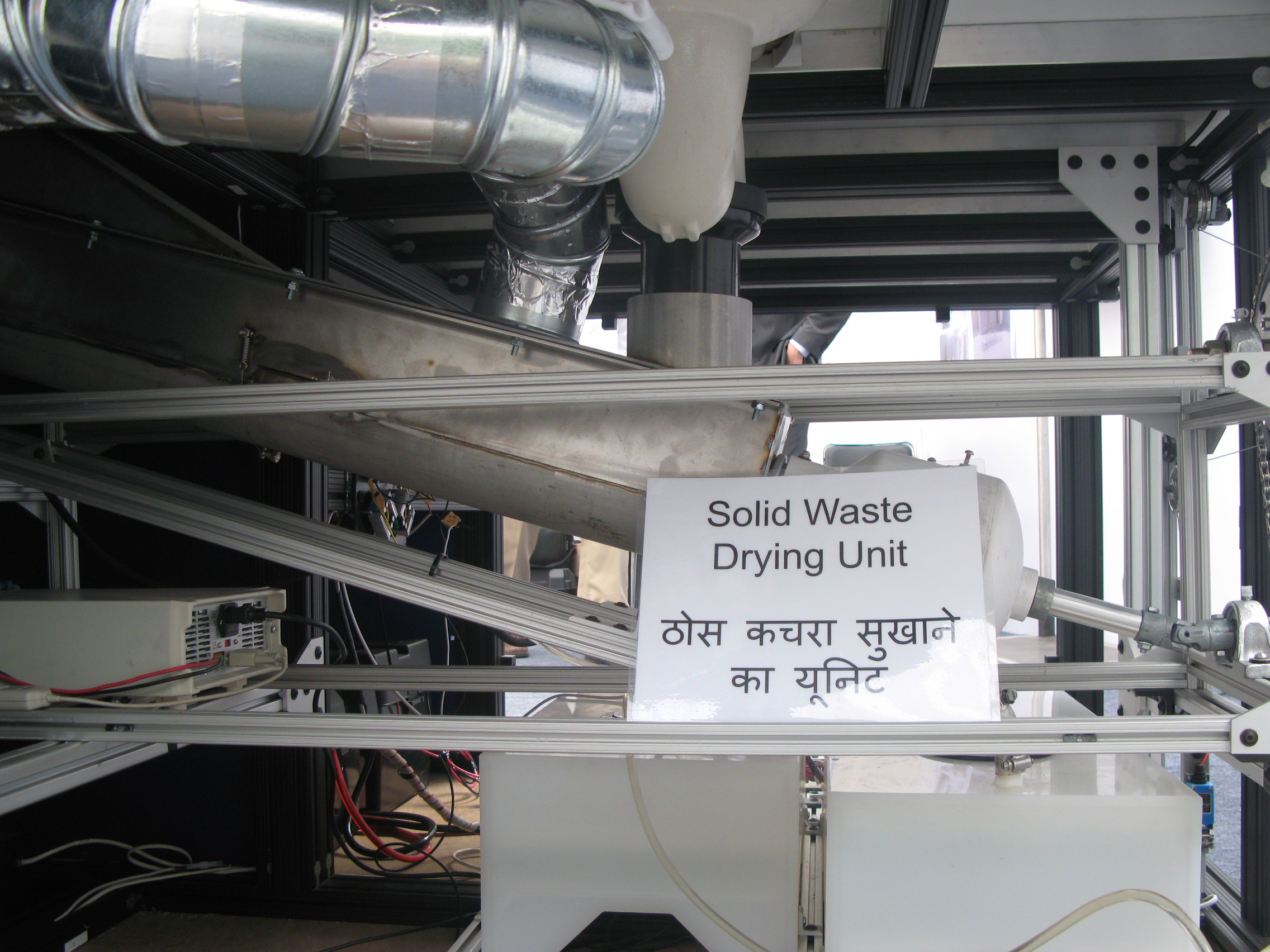- Sanitation systems
- Treatment of wastewater, sludges, organic waste, excreta
- Various other technologies and comparisons of treatment technologies
- Disinfection and other advanced treatment processes
- Electrochemical disinfection with integrated biomass oven for solid waste processing and energy harvesting (RTI International, USA) - field tests in India
Electrochemical disinfection with integrated biomass oven for solid waste processing and energy harvesting (RTI International, USA) - field tests in India
15.3k views
Re: RTI Reinvent the Toilet - September and October 2015 User Studies: Ahmedabad, India Summary Field Report
Here's a quick intro:
This report presents the findings from a set of 32 FGDs conducted with groups of potential users who were able to observe the alpha prototype on the CEPT University campus in September and October 2015. These FGDs build on previous data collection activities and technical research and development (R&D) efforts. RTI and its partners designed the FGDs in this round to collect information from potential users of the RTI prototype system on a variety of topics:
- water reuse in the RTI system
- menstrual hygiene management (MHM)
- men’s practices and preferences
- reactions to particular features of the RTI prototype user interface
Please Log in to join the conversation.
You need to login to replyRe: Electrochemical disinfection with integrated biomass oven for solid waste processing and energy harvesting (RTI International, USA and India)
"It’s great to hear that you are making progress and that your work has attracted community participants to purchase the unit, what was most appealing to them about it?"
Broad consensus revolved around the cleanliness of the unit, the space and privacy it provided, and the safety it could deliver. Many were in awe that such a system existed and were very excited about merely having the option of a toilet where there previously was none.
"I wonder to what extent the things people say they want or need in a toilet differs from what they do in practice."
We've had the exact same questions. That's why it continues to be critical to step back and simply observe participants interacting with our sanitation system. We've learned so much from this practice and we continue to learn more as testing continues in India.
Please Log in to join the conversation.
You need to login to reply- SDickin
-

- Moderator
- I'm a research fellow at the Stockholm Environment Institute and a geographer interested in environment health linkages, including how water and sanitation fit within the greater sustainable development agenda.
Less- Posts: 68
- Karma: 4
- Likes received: 26
Re: Electrochemical disinfection with integrated biomass oven for solid waste processing and energy harvesting (RTI International, USA and India)
It looks like you are considering a range real-life scenarios, e.g. a vegetarian diet, rodents, changing weather conditions, and it makes me realize the complexity of factors that can influence the operation of a toilet. I’m sure the field tests are critical, and I wonder to what extent the things people say they want or need in a toilet differs from what they do in practice. I think this has been observed in the case of fuel stoves technologies where it is a simpler process to observe how users interact with the technology!
Research Fellow
Stockholm Environment Institute
Stockholm, Sweden
This email address is being protected from spambots. You need JavaScript enabled to view it.
Please Log in to join the conversation.
You need to login to replyRe: Reports from RTI International's Recent Field Work in India
Here is the response to your questions that I received from Myles Elledge on our team:
+++++
Yes, with regard to MHM, we have made it a priority in our system design and user adoption user studies. MHM will be planned in, and is clearly a determinant to use and adoption. MHM is such a critical issue for women, and we see it as the right thing to do to work on providing a private and safe place for women to manage their menses, and to work to address the issue of safe disposal of menstrual absorbents. We are learning a lot in our prototyping and testing in India, and have been very encouraged by the user feedback from men and women to the directions we are exploring.
Our system is designed for a shared or public toilet application. E.g. Public market, rail station, bus station, construction site, school, or shared use in community setting. In many of these settings, it will be possible to charge users on a per use basis. In other settings such as a school, it would not be appropriate to have a user fee scenario. Depending on the application of the technology and the targeted users, we have imagined a business model that could be a NGO or community owned and operated model, or a public entity or municipality owned approach, a factor or construction company purchase and operation, or a franchise-like model for installation and maintenance of operations.
I think there are scenarios for break-even social benefits approach to the operations, and other business applications that would be driven on a profit-making orientation (franchise). Our cost model for producing the unit at scale suggests we are on target to achieve the Gates Foundation challenge to work towards 5 cents / per person / day metric over a 10-year life.
We will continue to explore business model scenarios in the coming year. Again, we have been encouraged to-date. We have had community participants in the FGDs come forward and want to organize themselves to purchase with their own funds and install the unit, as well as municipal and commercial entities in India expressing interest in testing, purchasing and manufacturing.
As we continue our field testing in India, we will be gaining insight on real-life issues of managing varied waste streams and operations in different settings. Such things as the number of times a person flushes the toilet, how long the body wash is used, or the desire and practice of washing clothes in the unit will greatly impact our assumptions about water volumes and how our system is sized, and how it manages, treats and recycles the water. Also, understanding what a vegetarian diet does to our solid waste composition, or the liquidity of stools will also be an area for us to see how the system manages waste processing and energy generation through the drying and combustion process.
Other environmental factors are also areas for learning, such as managing pests such as rodents, flies, monkeys, as well as robustness under varied weather conditions in extreme heat, heavy rains, and high humidity. We plan for many of these challenges, but we have lots more to learn through expanding the duration of operations and doing more field tests to know how to adapt the design and manage varied real-life operations.
Best regards, Myles
Please Log in to join the conversation.
You need to login to replyRe: Reports from RTI International's Recent Field Work in India
Sorry for the late reply. Our group is quite small and that translates to us often being quite busy as our project progresses.
I noticed in the previous discussions above you mentioned you are still deciding on a business model, so maybe there isn’t yet an answer to the following questions:
For a toilet system like this, are you expecting that there would be a cost to users, or that it would also potentially generate a profit for the operator? (I don’t think I saw any costs mentioned in the initial user perception results). If so, do you think this would impact user’s impressions and interest in the system. Is something you plan to tackle, or is it something up to the partner, NGO, government, etc. that choose to implement the toilet?
I've reached out to my group and they are trying to nail down a more definitive answer to your business model questions. As you suspected, we are still hashing out the details as to what we will end up using going forward (in both the short term and the long term). We are currently working on a post for our site in the near future addressing this topic. I'll be sure to share the link here, once it goes live.
Another question with respect to ‘real-life’ conditions, have you been able to address some of the challenges that were mentioned in the interview with Elisabeth (with variations in inputs, for instance). Seems like it would be difficult to deal with the range of possible unexpected scenarios.
With out a doubt, it has been a challenge. But it's one we've welcomed with open arms. Beginning in May 2014, RTI began field activities in India to gather user insights on the prototype’s technology and user interface, and gather feedback on the approach to on-site waste treatment. The information and data we've received has been invaluable in designing a toilet that can be modular and nimble, with the hope of being able to address as many needs/concerns as possible. I know I've mentioned it in a past post, but feel free to read our findings to date, on our site at: abettertoilet.org/field-work/ . Be sure to check out the right column on that page to see posts and documents pertaining to our work in the field.
Hopefully this helps address your questions. I will post more info on our business model as soon as I have more from the appropriate channels.
Please Log in to join the conversation.
You need to login to reply- SDickin
-

- Moderator
- I'm a research fellow at the Stockholm Environment Institute and a geographer interested in environment health linkages, including how water and sanitation fit within the greater sustainable development agenda.
Less- Posts: 68
- Karma: 4
- Likes received: 26
Thanks for sharing all of this information about your project. It looks like you received very detailed results from the focus groups, with many positive views on the technology. I was surprised to see menstrual hygiene management (MHM) seemed to be a major consideration in the discussions, and an important aspect of the toilet brought up by both men and women.
I noticed in the previous discussions above you mentioned you are still deciding on a business model, so maybe there isn’t yet an answer to the following questions:
For a toilet system like this, are you expecting that there would be a cost to users, or that it would also potentially generate a profit for the operator? (I don’t think I saw any costs mentioned in the initial user perception results). If so, do you think this would impact user’s impressions and interest in the system. Is something you plan to tackle, or is it something up to the partner, NGO, government, etc. that choose to implement the toilet?
Another question with respect to ‘real-life’ conditions, have you been able to address some of the challenges that were mentioned in the interview with Elisabeth (with variations in inputs, for instance). Seems like it would be difficult to deal with the range of possible unexpected scenarios.
Thanks in advance,
Sarah
Research Fellow
Stockholm Environment Institute
Stockholm, Sweden
This email address is being protected from spambots. You need JavaScript enabled to view it.
Please Log in to join the conversation.
You need to login to replyRe: Reports from RTI International's Recent Field Work in India
We wanted to be sure you knew that the India user studies reports from our June and Sept 2014 events in Gujarat are now posted on our RTI RTT website, under the field work tab. abettertoilet.org/field-work/
September survey and FGD (Focus Group Discussion) report
abettertoilet.org/wp-content/uploads/201...l-Report-Jan2015.pdf
June FGD report
abettertoilet.org/wp-content/uploads/201...l-Report_1.18.15.pdf
There are other reports from the field that can be found in the right column of our website (or below on mobile), so be sure to check those out as well.
Please Log in to join the conversation.
You need to login to reply- Elisabeth
-

- Moderator
- Freelance consultant since 2012 (former roles: program manager at GIZ and SuSanA secretariat, lecturer, process engineer for wastewater treatment plants)
Less- Posts: 3372
- Karma: 54
- Likes received: 931
Re: Sustainable Sanitation Alliance Interviews Brian Stoner from RTI International
www.flickr.com/photos/gtzecosan/sets/72157643968383945/
Quite a few of the other grantees mentioned a collaboration (planned or already in place) with RTI on their electrochemical disinfection technology for liquid waste.
Some example photos from the album:





Freelance consultant on environmental and climate projects
Located in Ulm, Germany
This email address is being protected from spambots. You need JavaScript enabled to view it.
My Wikipedia user profile: en.wikipedia.org/wiki/User:EMsmile
LinkedIn: www.linkedin.com/in/elisabethvonmuench/
Please Log in to join the conversation.
You need to login to replyRe: Sustainable Sanitation Alliance Interviews Brian Stoner from RTI International
On March 21, 2014, during the Reinvent the Toilet Fair , Brian Stoner had the pleasure of being interviewed by Elisabeth von Muench from ( Sustainable Sanitation Alliance (SuSanA) ) at Taj Palace Hotel in Delhi, India. The two-part interview was filmed by Arno Rosemarin (SEI).
In the first part, Brian introduces our system and in the second part, he walks them through each part of the waste management process, describing the features therein.
Part One:
Part Two:
Please Log in to join the conversation.
You need to login to replyRe: Electrochemical disinfection with integrated biomass oven for solid waste processing and energy harvesting (RTI International, USA and India)
1. -What is the amount of excreta that one facility can process? Is this project intended to be used in Indian slum communities? Or, what kind of public is this facility targeted for?
[Response] We are currently building the toilet with a processing capacity of approximately 10 users' human waste per day, assuming .4 kg of feces, 1.5 L of urine, and 8 L of flush and anal cleansing water. However, our ultimate goal is to build a community toilet system that can process human waste from 50 users per day. We are targeting dense urban slums in India currently.
Note, we are also studying how we could combine 8-10 toilet seats into a "community block" of toilets, which might include larger liquid and solid processing modules. For example, we will investigate building 1-2 larger solid and liquid processing modules in order to save on key component costs, such as the electrochemical cell.
2. Since the aim is incineration, shouldn’t urine diversion (instead of separation) be a main feature to optimize efficiency? UD will also not require sterilization of the liquid phase. What are the amounts of energy consumed during the disinfection
[Response] In all UD efforts of which we are aware, UD has proven to be difficult. From a usability standpoint, some urine is likely to be combined with fecal matter when feces is excreted. As such, we are currently building the system so that solid and liquid waste can be adequately disinfected. That said, we are very open to suggestions! Are you aware of any UD techniques that have proven to be effective at diverting all urine?
3. Urine is the main product of human excreta in volume (by 10 to 1). Its management requires piping that will not clog. That means no standing liquid and direct flow to the storage tank. Any results yet re crystal build up? If the reuse is defined from the start, this will help determine what exactly is to be done with the urine.
[Response] We are using a 2L flush with reused/treated liquid -- Roca developed a custom squat plate for us and designed the flush mechanism to not clog. The solid and liquid waste will be flushed directly into an inclined auger system tube and the liquid (urine, flush water, and anal rinsing liqud) and will be separated by a gravity-based system. The liquid that is separated will go directly in to the initial storage tank.
Re: crystal build up, we have not seen any thus far.
4. Since this project is equipped with some high-tech solutions, who would be in charge of its management once the facility is implemented?
[Response] We have not locked in to one business model. We are investigating a variety of business models in which different stakeholders would buy, own, operate and maintain the system. Governments, CBOs, NGOs, or private sector organizations could be involved, or possibly multiple stakeholders, in different business models.
We plan to conduct extensive testing of the system so that it is as robust as possible given cost constraints and that it is modular, so that parts could be swapped in and out without a high degree of technical sophistication. If, for example, a CBO operates and maintains a block of 8-10 toilet seats that feed human waste into our solid and liquid processing technologies, they could pay local maintenance professionals to perform maintenance (e.g., replace parts) as needed.
We are in initial discussions with several Indian engineering firms with which we are considering partnering for field testing in India. We are also working with these firms to identify maintenance capabilities in key urban cities that we are targeting currently.
5. This facility is a decentralized waste burning power plant connected to a chemical system. Do you think that a bad use of the facility could lead to an uncontrolled burning process or other possible malfunctions?
[Response] We will conduct extensive testing to ensure that the final toilet system that we develop is as safe as possible. We will also enable engineering and field testing partners to conduct additional safety testing, for example, in R&D labs in India.
6. Have you already carried out any pilot project within a real community?
[Response] No, we have not. We have met with a variety of government, NGO, private sector, and community stakeholders in India, and identified several potential locations for field testing. We plan to begin conducting initial field tests/evaluation in late spring 2014. We are currently developing our field testing strategy / evaluation methodology.
Please Log in to join the conversation.
You need to login to replyRe: Electrochemical disinfection with integrated biomass oven for solid waste processing and energy harvesting (RTI International, USA and India)
Thank you very much for sharing your research on the Forum. After reading the description of the project we have some questions for you:
-What is the amount of excreta that one facility can process? Is this project intended to be used in Indian slum communities? Or, what kind of public is this facility targeted for?
-Since the aim is incineration, shouldn’t urine diversion (instead of separation) be a main feature to optimize efficiency? UD will also not require sterilization of the liquid phase. What are the amounts of energy consumed during the disinfection
-Urine is the main product of human excreta in volume (by 10 to 1). Its management requires piping that will not clog. That means no standing liquid and direct flow to the storage tank. Any results yet re crystal build up? If the reuse is defined from the start, this will help determine what exactly is to be done with the urine.
-Since this project is equipped with some high-tech solutions, who would be in charge of its management once the facility is implemented?
-This facility is a decentralized waste burning power plant connected to a chemical system. Do you think that a bad use of the facility could lead to an uncontrolled burning process or other possible malfunctions?
-Have you already carried out any pilot project within a real community?
Looking forward to hear from you!
Arno Rosemarin and team
--SEI
Stockholm Environment Institute
This email address is being protected from spambots. You need JavaScript enabled to view it.
www.sei.org
www.ecosanres.org
Please Log in to join the conversation.
You need to login to replyElectrochemical disinfection with integrated biomass oven for solid waste processing and energy harvesting (RTI International, USA) - field tests in India
I work for RTI International in the USA who recently joined to become a SuSanA partner, and today I would like to tell you about a research grant that I am leading
It is called:
Electrochemical disinfection with integrated biomass oven for solid waste processing and energy harvesting
Name of lead organization: Research Triangle Institute
Primary contact at lead organization: Brent Rowe
Grantee location: Research Triangle Park, North Carolina
Developing country where the research is being or will be tested: India (initial testing)
Short description of the project:
The RTI-led team — which includes individuals at Colorado State University and Duke University — is developing a fully integrated toilet system that combines electrochemical disinfection technology for liquid waste processing and recovery, with a revolutionary new biomass energy conversion unit to both process the solid waste and convert it into energy.
Goal(s):
This project consists of three primary goals: 1) prove that human solid waste can be converted into a burnable fuel through drying/dewatering; 2) prove the use of thermoelectrics to convert thermal combustion energy into stored electrical charge; and 3) prove that liquid waste can be treated through electrochemical disinfection. Additional goals include minimizing cost – capital, labor, and O&M; minimizing energy use; and developing initial partnerships for implementation.
Objectives:
The core project objectives are: 1) develop a sewage separation and conversion unit that produces combustable fuel from human feces and other solid wastes; 2) develop a biomass combustion module that uses thermoelectrics to generate electrical energy from the combustion of fuel created from human waste; 3) Develop an electrochemical disinfection system that prepares liquid recoveres from mixed human waste for disposal or reuse in an environmentally responsible manner; 4) Integrate all operational systems and achieve system TRL6 *; and 5) achieve incentive target of TRL7.
* TRL stands for Technology Readiness Level, so here for further details:
www.susana.org/lang-en/library?view=ccbktypeitem&type=2&id=1834
Start and end date: Phase 1: September 2012 to November 2013; Phase 2: 28.03.2014 to 31.03.2017
Grant type: Reinvent the Toilet Challenge (RTTC) Round 2; grant size: USD 1,700,252 (Phase 1) followed by USD 5,467,203 (Phase 2)
(see here for Phase 1: www.gatesfoundation.org/How-We-Work/Quic...s/2012/08/OPP1064945 and here for Phase 2: www.gatesfoundation.org/How-We-Work/Quic...s/2014/03/OPP1105725)
Funding for this research currently ongoing (yes/no): Yes
Research or implementation partners:
Duke University and Colorado State University are our key research partners. We are currently developing implementation partners based on a variety of discussions we have held with potential partners before, during, and after the design conference in Barcelona in April 2013 and a recent trip made by several RTI staff to Delhi, Ahmedabad, Trivandrum, and Mumbai in India in May 2013.
Links, further readings – results to date:
o Project and technology overview may be found at project website: abettertoilet.org/toilet-technologies/.
o Regular updates including videos and pictures may be found under the project update tabs: abettertoilet.org/category/updates/.
o More about RTI and lists of team members, backgrounds and partner organizations may also be found under: abettertoilet.org/who-we-are/
o Overview of the initial project goals and objectives was presented at the FSM-2 Conference in Durban, South Africa in October 2012 – see presentation slides at www.susana.org/images/documents/07-cap-d...e-university-usa.pdf
and video of presentation (Mandisa Mazuibuko) at the same conference:
o Latest results from the liquid waste treatment research was presented at the Electrochemcial Society Meetings in Toronto on May 14, 2013 – see abstract at ecs.confex.com/ecs/223/webprogram/Paper16950.html (Akshay Raut).
Please let me know if you have further questions.
Oh and Elisabeth already asked me about costs and maintenance aspects. My reply to her was: "Some of your more detailed questions based on cost structure and adoption will be a focus of our Phase 2 program".
Thanks!
Brent
Brent R. Rowe
Senior Economist
Technology Economics & Policy
RTI International
San Francisco, CA 94104
USA
Please Log in to join the conversation.
You need to login to reply- Sanitation systems
- Treatment of wastewater, sludges, organic waste, excreta
- Various other technologies and comparisons of treatment technologies
- Disinfection and other advanced treatment processes
- Electrochemical disinfection with integrated biomass oven for solid waste processing and energy harvesting (RTI International, USA) - field tests in India









